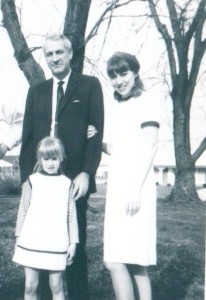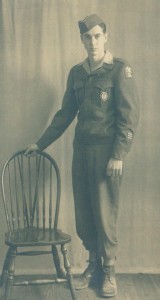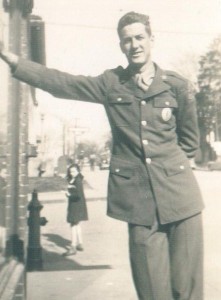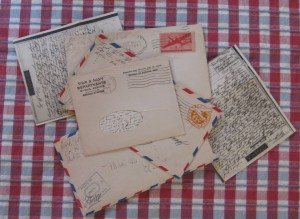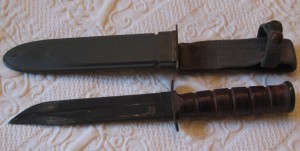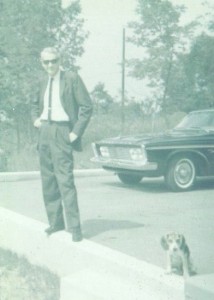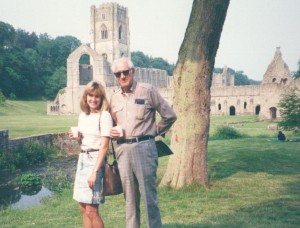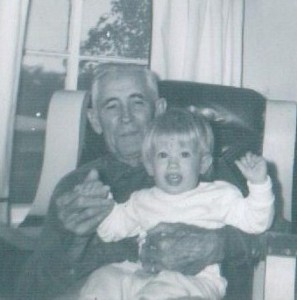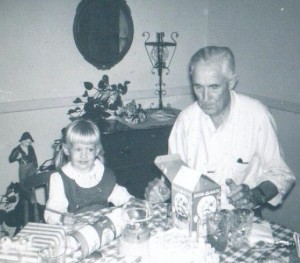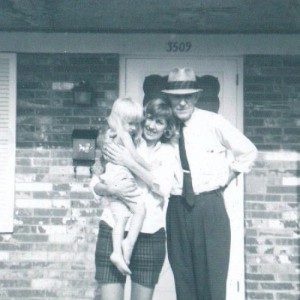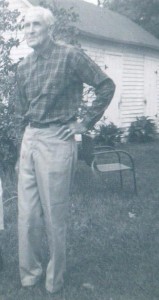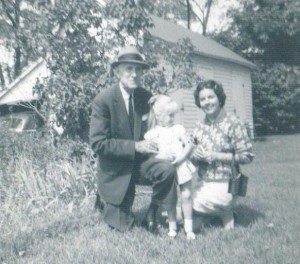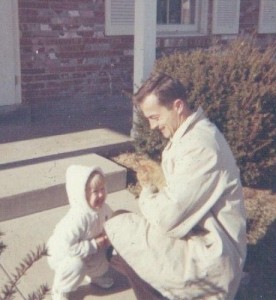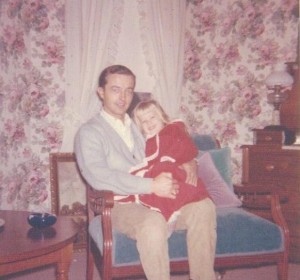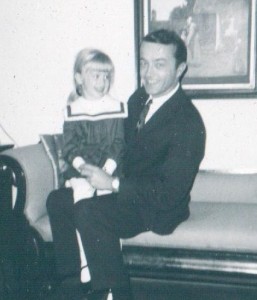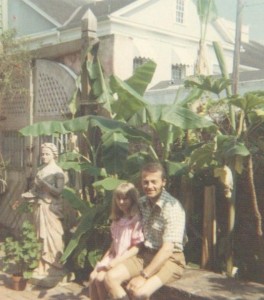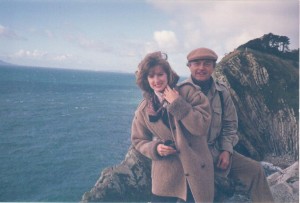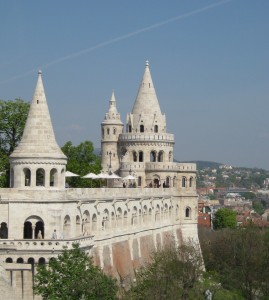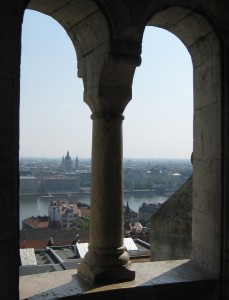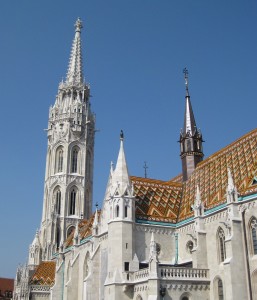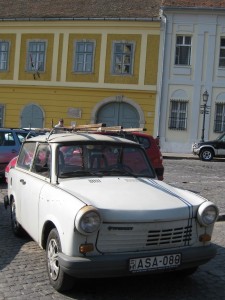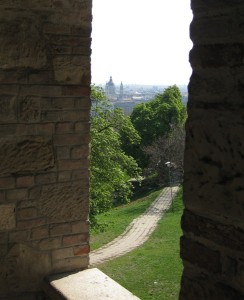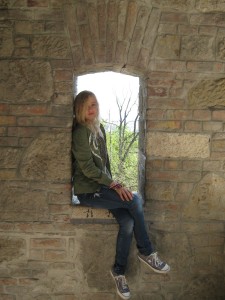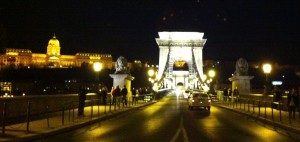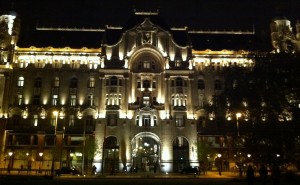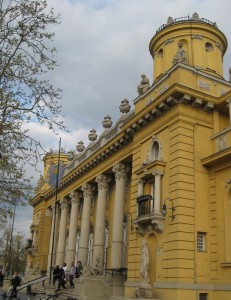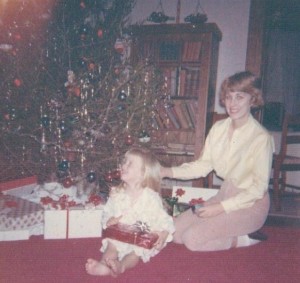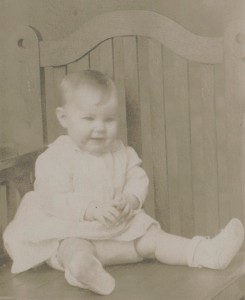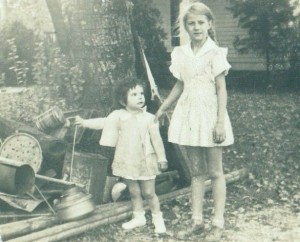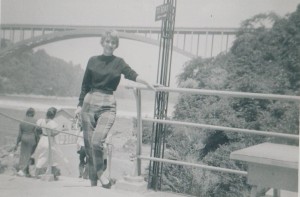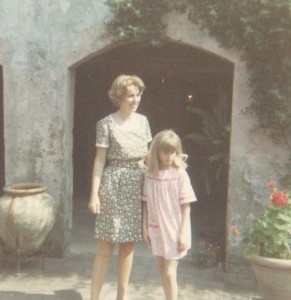My husband was a reluctant father. Had it been his choice, he might be childless now. He wasn’t certain that children were a crucial part of marital happiness. I was convinced that they were, and I remained resolute. When he saw that he had no choice except to cut and run, he came around to my way of thinking. He would be the first now to admit that he was wrong. All during my pregnancy, he was an enthusiastic, caring father-to-be. And from the first moment he saw his daughter, he was smitten. At that point he became a vigilant father. He never let our baby out of his sight at the hospital. Two newborns had been switched a month earlier somewhere in Virginia, and he was determined that we get home with our baby. When a nurse wondered if our daughter’s inconsolable wails might be due to hunger pains, H gave her the supplemental bottle in the nursery. He was there at the nurse’s side for the first bath, and he changed the first diaper.
We chose our townhouse because it was affordable and less than a mile from H’s office. For the first few months H came home around mid-day for hands-on time with D. During her first week of life, it appeared that she was intent on blinding herself with her tiny, perfectly formed fingernails. H promptly went to Babys ‘R Us and came back with preemie gowns with fold-over pouches on the sleeves to cover her nails. Unlike many fathers, he almost enjoyed the endless rounds of shopping for baby gear.
When D was about two months old, H began a Saturday-morning tradition that endures to this day. He would pack up our baby in her car carrier, load up the stroller, shoulder the pastel-colored diaper bag and take her out with him for breakfast. It gave me a welcome break. By the weekend, as a new mother, I was often near the end of my rope. (See New Motherhood, An Uphill Climb, January 2012.) My husband got the chance to have his little girl to himself. He loved carrying D through the mall, watching her gaze wide-eyed at all the fascinating sights such as lights and people. He loved being seen with his beautiful baby girl. He thought her especially cute during the time when her fine fluff of blond hair stuck straight up like the crest of a baby bird, just like his did at that age.
H typically worked (and still works) long hours. For several years when D was young, H spent four days a week in Cleveland. The only “up” side of this was his accumulation of enough airline and hotel miles to get us a nice week each winter at some spot in the Caribbean. Because he was away most of the week, Saturday morning became sacred father-daughter time. D declined Friday-night sleepovers and Saturday playdates because they interfered with her breakfast with Daddy. As she grew older, they added a follow-up activity. They might try a new park or shop for a cool toy or gadget (remote-control car, water-balloon launcher, science kit) they could enjoy together. Occasionally they’d go to Dulles or Reagan Airport to watch the planes take off and land. Sometimes they’d ride Metro and let serendipity be their guide, deciding at the spur of the moment which stops beckoned. Sometimes they simply got out of one train car and jumped back on another before the doors closed. They would return from these trips excited at having discovered a great German pastry shop in Georgetown or a wild, enchanted-looking chasm at the Courthouse station.
Typically, after breakfast these days, H and D go exploring off the beaten track. They might follow new trails through the woods or take their bikes on the train and ride around little-known parts of DC. Just last week they managed to get up to a rooftop restaurant with their bikes in tow. They have been known to hike the overgrown areas under highway overpasses. H enjoys showing our daughter that any place, no matter how seemingly ordinary, becomes interesting upon closer examination. At any random highway exit, wonders worth noting may be revealed if one simply looks.
In our daughter, H got the adventurous, dare-devil child he had hoped for. Several years ago, D was yearning for the thrills of a roller coaster, so they went to Six Flags and rode all the biggest rides. When she wanted to try Go-Karts, he gladly took her, even though it meant driving to Maryland. On the rare times when I’m away for the weekend, H plans a Saturday chock-full of action. One such day began at IHOP and concluded ten hours later at the Manassas Speedway. My father was sufficiently impressed with the number of activities they tackled that he wrote them all down.
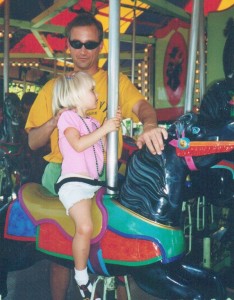
My husband’s favorite outdoor activity, by far, is windsurfing. He has been passionate about the sport since he first tried it as a teenager at a Cape Cod pond. But because we don’t live in a prime windsurfing spot, his actual time out on the water is usually limited to vacations. He has high hopes for D to become his windsurfing buddy, and she may not disappoint him. Our Caribbean trips have allowed her to try it under idyllic conditions. She is certainly her Daddy’s buddy when it comes to other water adventures. At Cape Cod, they may rise at dawn and head to the icy water of the ocean to ride the waves on boogie boards. They share a fierce love of water parks, and the steeper the slide, the higher the drop, the better.


H and D both love going fast over water, whether it’s flowing or frozen. Having grown up in Rochester, H is an expert on snow and snow-related activities. He finds the ideal sledding spots, and he makes sure we are equipped at all times with a variety of sleds. Much to D’s delight, her father is a skilled builder of intricately tunneled snow forts and gargantuan snowmen. My appreciation of snow is more aesthetic, and I quickly got my fill of playing in it with D when she was young and H was away. To me, the ordeal of getting her into her snowsuit was mentally and physically exhausting. To H, it was simply the necessary groundwork, paving the way for fun.
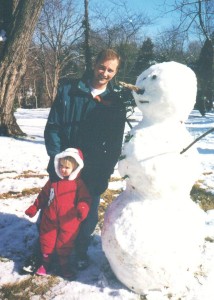
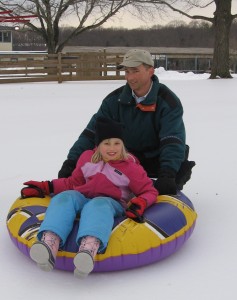
Skiing, of course, is another of H’s favorite activities. He started D on the slopes when she was in preschool, and now she’s an accomplished skiier. Once or twice a year, they head out while it’s still dark in order to arrive at a ski resort in Pennsylvania just as it opens. As is the case with the water parks, if at all possible, I remain home with Kiko.
Our daughter is lucky that she has one parent who is still willing to go to great lengths for fun and adventure. The older I get, the more I can relate to my grandfather’s desire to hide away somewhere quiet and read. I was not always this way. I’ve gone to water parks and skiied with H. I briefly considered trying windsurfing, many years ago, in an effort to impress him. As a teenager I was a capable water-skiier, and I still love roller coasters, particularly the tall, smooth, steel ones. But now, the pay-off involved in most of these activities just isn’t worth the preparatory effort, the travel time, or the risk of injury. I admire my husband for many reasons, not the least of which is his continuing faith that a memorable day with his daughter is worth any amount of struggle and strife.


